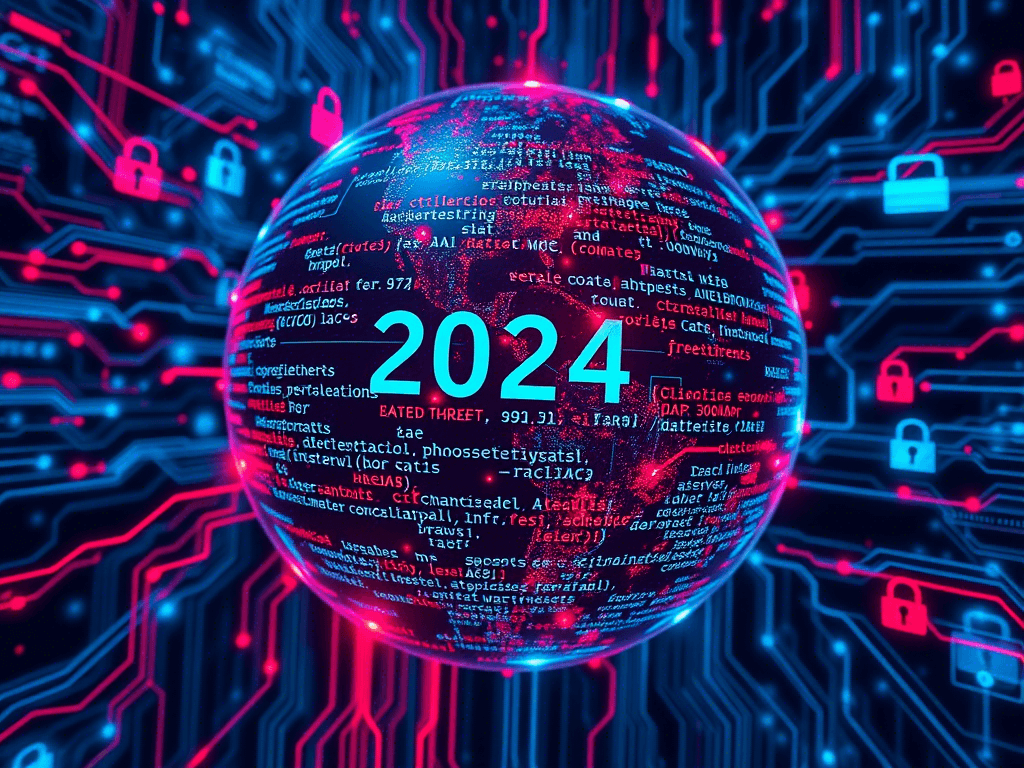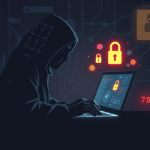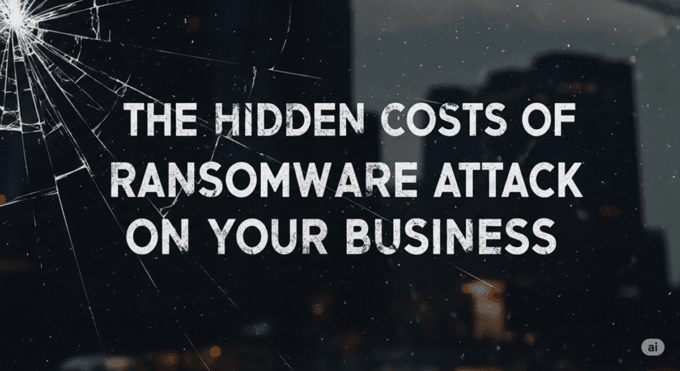The digital landscape is evolving at breakneck speed, and so are the threats that come with it. In 2024, cybercriminals have become more sophisticated, leveraging advanced technologies like AI and quantum computing to launch devastating attacks. From ransomware campaigns targeting critical infrastructure to supply chain vulnerabilities exploited on a global scale, this year has been a wake-up call for businesses, governments, and individuals alike.
As we approach 2025, understanding these major incidents and their implications will be key to staying ahead of emerging threats. Let’s dive into the top cyber threats of 2024, explore real-world examples, and uncover actionable insights to prepare for what lies ahead.
Introduction: The Growing Complexity of Cyber Threats
In 2024, cyber threats aren’t just increasing in frequency—they’re becoming more complex and harder to detect. Hackers are no longer lone wolves operating from basements; they’re organized groups backed by nation-states, criminal syndicates, or even rogue insiders. These actors are using cutting-edge tools to bypass traditional defenses, leaving even the most secure organizations vulnerable.
But why should you care? Because the stakes are higher than ever. A single breach can cripple businesses, disrupt essential services, and compromise millions of people’s personal data. For instance, the GridLock Ransomware Attack earlier this year paralyzed energy grids across three continents, causing widespread blackouts and economic losses estimated at $15 billion.
To navigate this treacherous terrain, let’s examine the biggest cyber threats of 2024 and how they’ll shape the cybersecurity landscape in 2025.
Major Cyber Threats of 2024
Ransomware Attacks Targeting Critical Infrastructure
Ransomware remains one of the most pervasive threats, but its impact reached new heights in 2024. Attackers targeted critical sectors such as healthcare, utilities, and transportation, demanding exorbitant ransoms while threatening public safety.
- Example: The MediSecure Breach saw hospitals locked out of patient records until a $10 million ransom was paid. Lives were endangered as surgeries were delayed and emergency care disrupted.
- Why It Matters: With critical infrastructure increasingly reliant on interconnected systems, attackers know the pressure points that guarantee payouts.
AI-Powered Cyberattacks
Artificial intelligence isn’t just a tool for defenders—it’s also being weaponized by attackers. In 2024, AI-driven phishing campaigns became nearly indistinguishable from legitimate communications, fooling even tech-savvy users.
- Example: The DeepPhish Campaign used AI-generated deepfake audio to impersonate CEOs, tricking employees into transferring funds to fraudulent accounts.
- Why It Matters: As AI tools become more accessible, expect attackers to leverage them for everything from crafting malware to automating social engineering scams.
Supply Chain Vulnerabilities
Supply chain attacks skyrocketed in 2024, exploiting weak links in third-party vendors’ security measures. Once inside a vendor’s system, attackers gained access to multiple downstream clients.
- Example: The CodeBridge Compromise affected over 500 companies when a popular software update was laced with malicious code. This single attack caused billions in damages globally.
- Why It Matters: Organizations must now scrutinize not only their own defenses but also those of their partners and suppliers.
Quantum Computing Risks
While still in its infancy, quantum computing poses a looming threat to encryption standards. Researchers warned in 2024 that current cryptographic protocols could soon be rendered obsolete by quantum algorithms.
- Example: Early demonstrations showed that quantum computers could crack RSA encryption—a cornerstone of modern cybersecurity—in mere minutes.
- Why It Matters: Preparing for post-quantum cryptography is no longer optional; it’s imperative for safeguarding sensitive data long-term.
For more details on these trends, visit ENISA’s Annual Threat Landscape Report.
Lessons Learned from 2024’s Major Incidents
Each incident in 2024 offers valuable lessons for strengthening cybersecurity strategies moving forward. Here’s what we’ve learned:
Human Error Remains a Weak Link
Despite advancements in technology, human error continues to play a significant role in breaches. Whether it’s clicking on phishing emails or misconfiguring cloud storage, mistakes open doors for attackers.
- Takeaway: Invest in ongoing cybersecurity awareness training to educate employees about recognizing and avoiding common pitfalls.
Legacy Systems Are Prime Targets
Outdated software and hardware remain particularly vulnerable due to unsupported versions and unpatched flaws. Many organizations hit hardest in 2024 were running legacy systems.
- Takeaway: Prioritize upgrading outdated infrastructure and implement robust patch management processes.
Collaboration Is Key
No organization can fight cybercrime alone. Successful responses to large-scale attacks often involved collaboration between private companies, government agencies, and international partners.
- Takeaway: Build relationships with industry peers and participate in information-sharing initiatives like CISA’s Cybersecurity Advisory Committees.
Preparing for 2025: What You Need to Know
Looking ahead to 2025, here’s how you can fortify your defenses against emerging threats:
Adopt Zero Trust Architecture
Zero Trust principles assume that no user or device should automatically be trusted—even if they’re already inside the network perimeter. Implementing this model reduces the risk of lateral movement during an attack.
Invest in AI for Defense
Just as attackers use AI, defenders can harness machine learning to detect anomalies, predict threats, and respond faster. Tools like behavioral analytics and automated threat hunting platforms are game-changers.
Enhance Supply Chain Security
Conduct thorough audits of third-party vendors and enforce strict security requirements. Consider adopting frameworks like ISO/IEC 27001 for supply chain risk management.
Prepare for Post-Quantum Cryptography
Start exploring quantum-resistant algorithms and transitioning to post-quantum encryption standards. Resources like NIST’s Post-Quantum Cryptography Project provide guidance.
Develop Incident Response Plans
Ensure your team knows exactly what to do during a breach. Regularly test and refine response plans through tabletop exercises and simulations.
FAQs About Cyber Threats in 2024 and Beyond
What Were the Biggest Cyberattacks of 2024?
Some of the most notable included the GridLock Ransomware Attack, the MediSecure Breach, and the CodeBridge Compromise. Each highlighted different aspects of modern cybercrime.
How Can I Protect My Business from AI-Powered Attacks?
Focus on multi-factor authentication (MFA), employee training, and deploying AI-based detection tools to identify suspicious patterns early.
Will Quantum Computing Make Encryption Useless?
Not immediately, but it will eventually render many current encryption methods obsolete. Start planning now for post-quantum solutions.
Are Small Businesses Also at Risk?
Absolutely. Cybercriminals often target smaller organizations because they typically have weaker defenses compared to larger enterprises.
Where Can I Stay Updated on Emerging Threats?
Follow reputable sources like ENISA, CISA, and IBM’s X-Force Threat Intelligence Index.
Final Thought
The cyber threats of 2024 have shown us that complacency is no longer an option. As attackers grow bolder and more innovative, our defenses must evolve too. By learning from past incidents, adopting proactive strategies, and staying informed about emerging risks, we can build resilience against whatever 2025 throws our way.
Remember, cybersecurity isn’t a destination—it’s a journey. Equip yourself with knowledge, invest in robust protections, and foster a culture of vigilance. Together, we can turn the tide against cybercrime and secure a safer digital future.
Must Read:
- How to Encrypt Sensitive Files Before Sharing Them: Complete 2025 Security Guide
- Zero Trust Architecture: Buzzword or Backbone in 2025?
- The Essential Guide to Vulnerability Patch Management and Hardening
- Top 5 Opensource Threat Detection Tools for Real Time Cyber Threat
- Don’t Get Duped! The Top 10 Cyber Scams in India (2025 Edition)

















Leave a comment